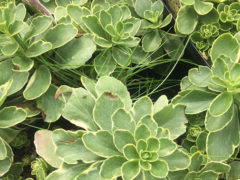
‘Variegated’ orange stonecrop
Sedum kamtschaticum var. middendorffianum ‘Variegated’
Narrow green toothed leaves on plants growing just 8-12″ tall and topped with yellow flowers … Continued
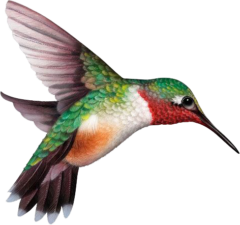 Hummingbirds, bees and butterflies are well-known pollinators, but there are thousands of unsung pollinator heroes, including moths, wasps, flies, and beetles, many mammals, birds, and reptiles, who also take on the job.
Hummingbirds, bees and butterflies are well-known pollinators, but there are thousands of unsung pollinator heroes, including moths, wasps, flies, and beetles, many mammals, birds, and reptiles, who also take on the job.
Pollinators move from plant to plant, fueling up with pollen and nectar from blooming trees, shrubs, perennials, annuals, vegetable plants, and herbs. As they move, the pollinators transport and deposit pollen, fertilizing plants and allowing them to reproduce.
Pollinator plants can be native and non-native, but not all flowering plants are equal when it comes to providing the highest quality protein-rich pollen. Many hybrids don’t even produce pollen at all. The following list includes pollen-rich plants to include in your garden to provide pollinators with food.
Local butterfly expert Lenora Larson has created these informational handouts. You can download them here!
• Butterflies: Flying Flowers in your Garden!
• A Vital Connection: Native Plants and Butterflies
• Long Lips Farm Caterpillar Foodplants
• Butterfly Bartending: Nectar Flowers
• Long Lips Farm: Selected Butterfly Nectar Flowers
• Bee Friendly: Plants for Bees and Other Pollinators
Since 1970 the population of North American birds has dropped nearly 30% — almost three billion birds have vanished from our forests, grasslands, and backyards in less than a human lifetime. It’s a chilling fact that makes it clear that we must act as individuals to help ensure their survival.
Most importantly, ninety-six percent of all terrestrial bird species rear their young on insects so it is also important to grow plants that feed insects to provide a well-rounded habitat in your garden.
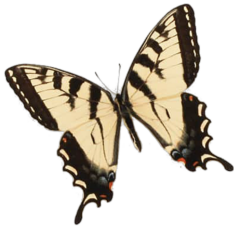

Sedum kamtschaticum var. middendorffianum ‘Variegated’
Narrow green toothed leaves on plants growing just 8-12″ tall and topped with yellow flowers … Continued
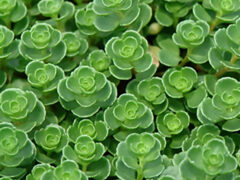
Sedum spurium ‘John Creech’
Dr. John Creech, former director of the U.S. National Arboretum, discovered this Sedum in the … Continued
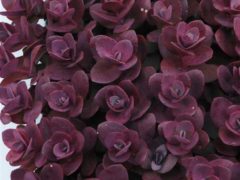
Sedum 'Sunsparkler Cherry Tart'
An excellent addition to rock gardens and pathways. Vibrant, colorful foliage attracts pollinators for a … Continued
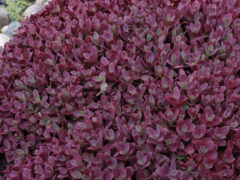
Sedum 'Firecracker' SunSparkler®
Brilliant burgundy-red sedum foliage all season long adds more color with soft pink flowers in … Continued
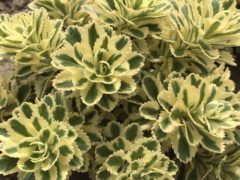
Sedum takesimense 'Nonsitnal' Atlantis®
Tight rosettes of notched, deep green succulent leaves edged in broad, creamy yellow margins. Plants … Continued
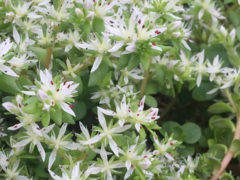
Sedum ternatum
This small, spreading native perennial typically occurs in damp locations along stream banks, bluff bases … Continued
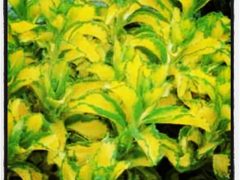
Sedum alboroseum 'Mediovariegatum'
Sedum alboroseum ‘Mediovariegatum’ has green and cream variegated folded and tight foliage, covered with pale … Continued
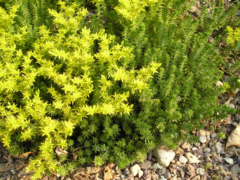
Sedum sexangulare
Super low, 4″ mat of very fine green foliage is covered with yellow flowers in … Continued
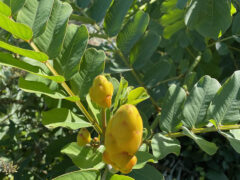
Senna alata
A showy addition to any garden, large round leaves fold up at night. Large, upright, … Continued
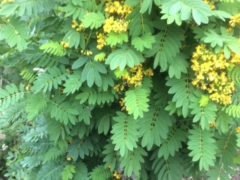
Senna hebecarpa
Round, pea-like foliage on 4-6′ tall plants with dark yellow, pea-like blooms in summer. We … Continued
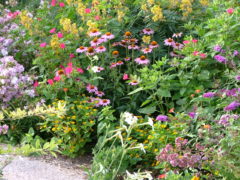
Senna {Cassia} marilandica
Maryland wild senna is a perennial flowering native that blooms in summer and grows up … Continued
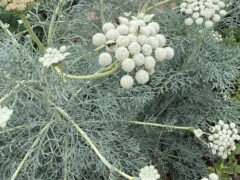
Seseli gummiferum
Lacy silver-blue foliage resembles Artemisia ‘Powis Castle’ but is more compact with spikes that resemble … Continued